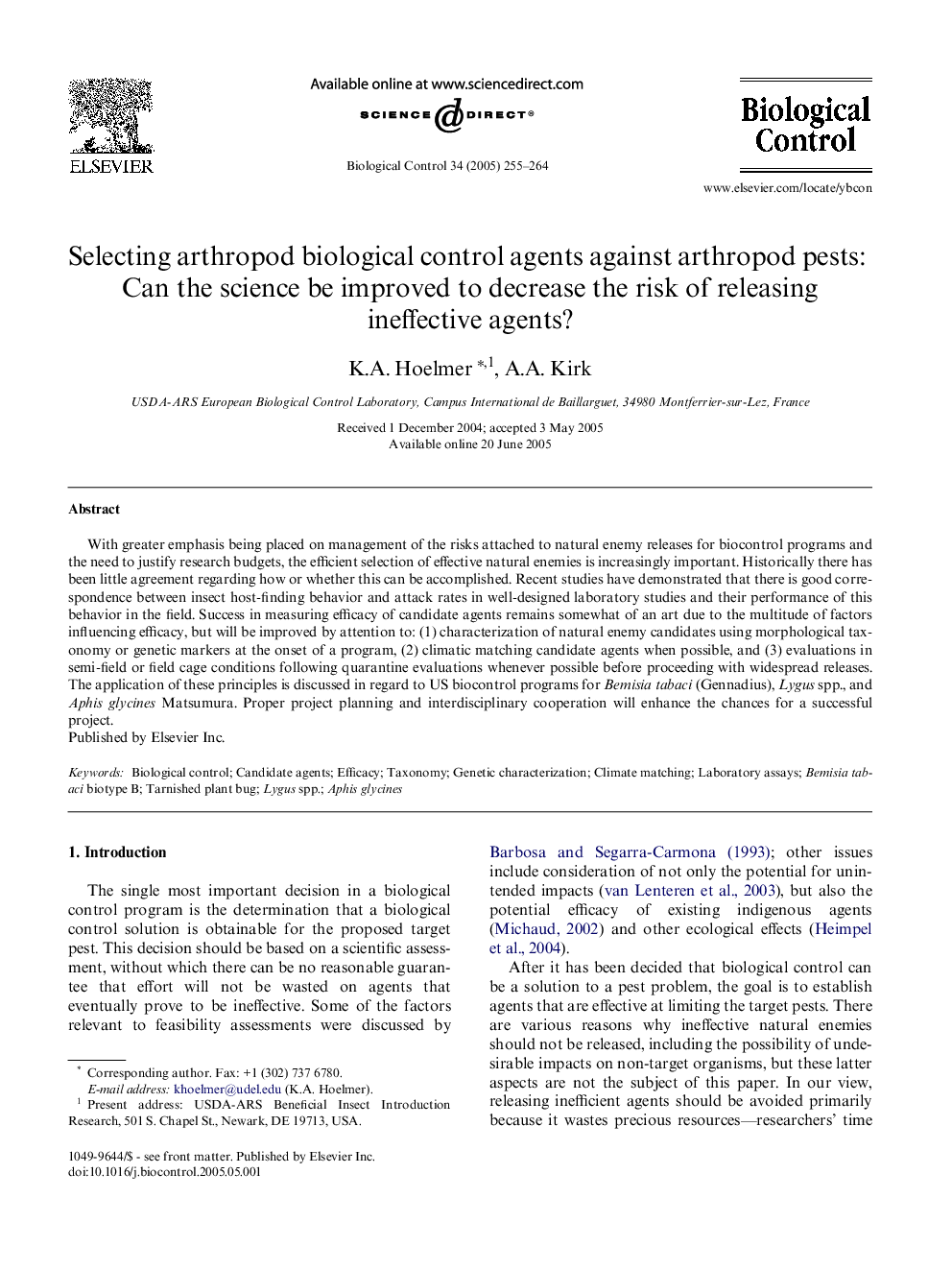| Article ID | Journal | Published Year | Pages | File Type |
|---|---|---|---|---|
| 9471986 | Biological Control | 2005 | 10 Pages |
Abstract
With greater emphasis being placed on management of the risks attached to natural enemy releases for biocontrol programs and the need to justify research budgets, the efficient selection of effective natural enemies is increasingly important. Historically there has been little agreement regarding how or whether this can be accomplished. Recent studies have demonstrated that there is good correspondence between insect host-finding behavior and attack rates in well-designed laboratory studies and their performance of this behavior in the field. Success in measuring efficacy of candidate agents remains somewhat of an art due to the multitude of factors influencing efficacy, but will be improved by attention to: (1) characterization of natural enemy candidates using morphological taxonomy or genetic markers at the onset of a program, (2) climatic matching candidate agents when possible, and (3) evaluations in semi-field or field cage conditions following quarantine evaluations whenever possible before proceeding with widespread releases. The application of these principles is discussed in regard to US biocontrol programs for Bemisia tabaci (Gennadius), Lygus spp., and Aphis glycines Matsumura. Proper project planning and interdisciplinary cooperation will enhance the chances for a successful project.
Keywords
Related Topics
Life Sciences
Agricultural and Biological Sciences
Agronomy and Crop Science
Authors
K.A. Hoelmer, A.A. Kirk,
